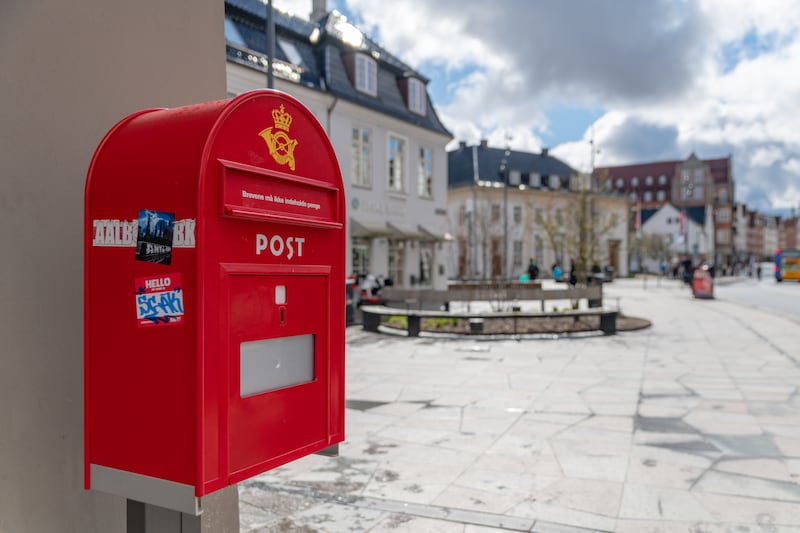I’m trying to count how many actors are zipping around the rehearsal-room floor, but they’re moving too fast. Ten, I decide. No, wait: 12. Billed as a fight sequence, this scene has both the compacted energy of dance and the precision of a high-wire act. An exaggerated kick sends a pirate flailing backwards, arms windmilling. A cartwheel concludes in a punch. Captain Hook is grabbed and held tight, only to flip upside down, suddenly sharp and pointed as an exclamation mark.
Sitting next to me at the edge of the room is Roddy Doyle, author of this new version of Peter Pan. The scene runs for several minutes, yet his stage directions, he says, simply read, “Some Errol Flynn-type fencing”. That Ned Bennett, the production’s director, has taken so few words and, working with the acrobatic choreographer Jonah McGreevy, turned the swashbuckle phasers up to 10 augurs well for the Gate Theatre’s new show.
Bennett and Doyle had very different routes into this collaboration. A couple of years ago, when she was the Gate’s artistic director, Selina Cartmell asked Doyle if he’d be interested in attempting Peter Pan. “We had worked together with Róisín McBrinn” – Cartmell’s successor – “on The Snapper, and it had been a hugely satisfactory experience,” the writer says. “So I read Peter Pan and thought, yeah, I’d love to do it. It was going to go on in 2020, and couldn’t, obviously; 2021, it couldn’t. Then there was a change of regime in 2022, and I thought maybe that was the end of that. And then Róisín got in touch, and they wanted to do it for this year.”
For Doyle it was third time lucky, because decades earlier – “before the internet” – a BBC producer named Mark Shivas, whose credits included Stephen Frears’s screen versions of The Snapper and The Van, from the writer’s Barrytown triology, had asked him to adapt Peter Pan for television. Doyle had to turn it down because he was too busy, and regretted it afterwards. When the Gate approached him, it felt like getting another chance. It was McBrinn who suggested Bennett, a UK-based director who already had productions with Britain’s National Theatre and in the West End of London under his belt. Doyle, disarmingly describing himself as “a novelist who does a bit of theatre now and again if I’m lucky”, agreed. “If somebody like Róisín suggests someone like Ned, I’m happy to go with that.”
READ MORE
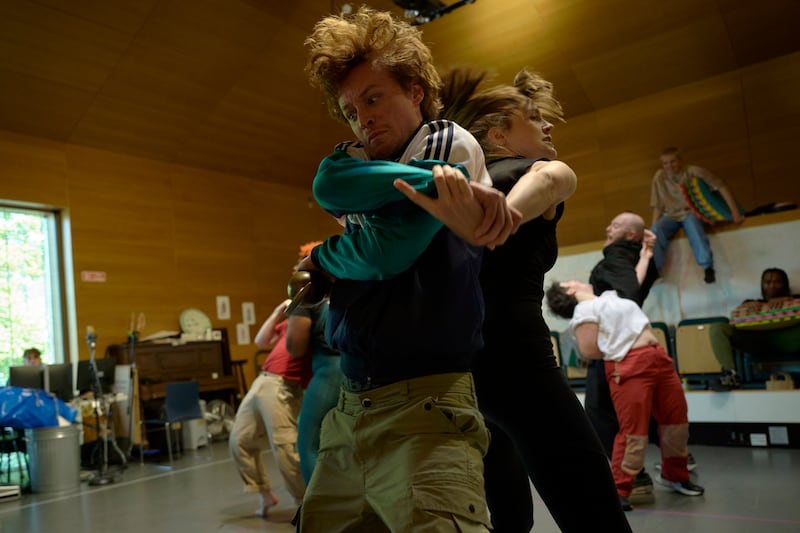
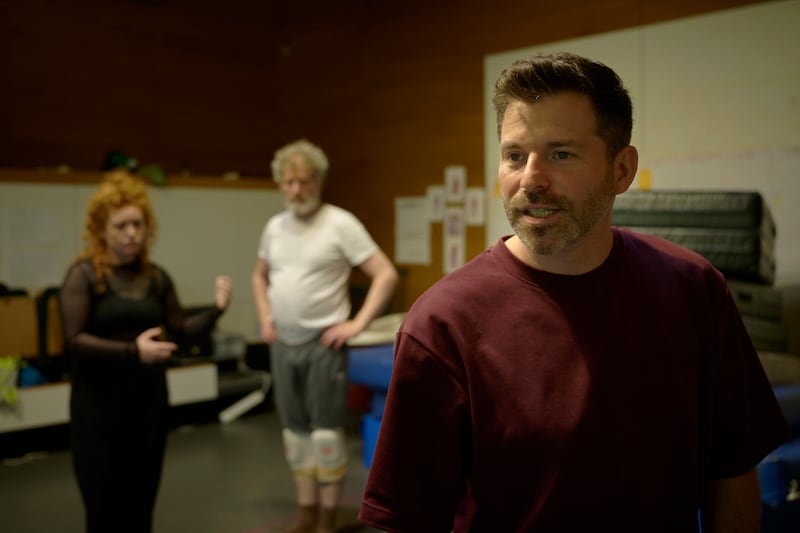
Because Peter Pan and the gang are such familiar characters, I assumed I knew the details of JM Barrie’s original: the eternal boy who, with his chum Tinker Bell, appears in the nursery of the Darling household in London and invites Wendy, John and Michael Darling to fly with him to Never Land, where they meet not only the Lost Boys and Tiger Lily but also the villainous Hook.
If you’re going to do an adaptation of Peter Pan, it has to have a very particular voice and take. That was what made me really, really appreciate this version. It adds to its universality by making it that specific
— Ned Bennett, the show's director
I had mental images of a cartoon figure, a jaunty little guy wearing a green tunic and tights, and a cute blond fairy with diaphanous wings, but the characters I was picturing were a mash-up of various screen adaptations. “Reading Roddy’s was the first time I’d actually read the play, or a version of the play,” Bennett says. He’d seen and loved the West End show Peter Pan Goes Wrong, about the knockabout misadventures of a well-meaning but disastrously inept theatre troupe, but before that his main connection was via Steven Spielberg’s Hook, a sequel to Peter Pan.
“As a kid I saw Hook at the cinema, and was completely obsessed with it,” Bennett says. Doyle laughs. “Ned was in the house a few weeks ago. We were sitting around the table, and he was talking about Hook, and I was thinking, ‘This man is talking about the best film ever made. He’s so enthusiastic. And I know when I look at it, it won’t be the best film ever made. It’ll be shite.”
Doyle reckons he must have seen Walt Disney’s 1953 version as a child, but unlike The Lion King or the original Jungle Book, the movie didn’t leave a big impression on him. Reading the play did. He stayed away from all other versions when writing his script, however. “I wanted to keep my page clear. But if you keep close to Peter Pan’s autobiography, you end up not liking JM Barrie to a degree. He was such an overwhelming person. But then, when you begin to broaden it out, and you think of the psychology of the thing, and you think of Wendy, and you think less about him than what he’s done... I think he did an extraordinary piece of work. It’s wonderful that, nearly 120 years after the first production, we’re doing something that, although it’s radically different, is very faithful to the spirit of the thing. Very, very faithful.”
Bennett agrees. “If you’re going to do an adaptation of Peter Pan, it has to have a very particular voice and take. That was what made me really, really appreciate this version. It adds to its universality by making it that specific.”
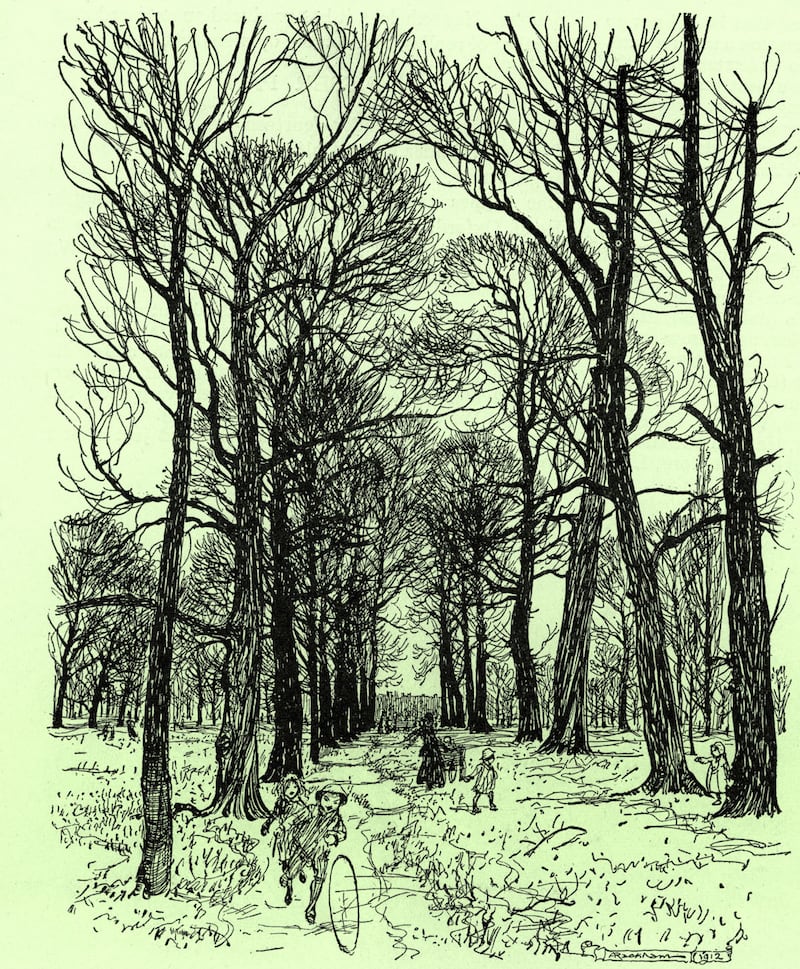
The original character of Peter made his debut in a chapter of The Little White Bird, Barrie’s 1902 novel, called Peter Pan in Kensington Gardens, but you could say that the story really began in 1897, when Barrie met and befriended Sylvia and Arthur Llewelyn Davies and their five sons, George, John, Peter, Michael and Nicholas. Barrie later wrote, “I made Peter by rubbing the five of you violently together... That is all Peter is – the spark I got from you.” Sylvia and Arthur both died while their children were young, and Barrie became the boys’ unofficial guardian.
It’s too easy that the pirate is the dad. I thought it would be psychologically way more interesting to have the mother... In her subconscious somehow, she wants to kill her kids
— Roddy Doyle
You could also say, however, that the story really began years earlier, following the sudden death of Barrie’s older brother David, who fractured his skull in a fall while ice-skating. Barrie, who was just six, tried to comfort his mother by wearing his brother’s clothes, and even whistling in the same way. “Once I read about him losing his older brother, and then having to impersonate him in order to get attention from his mum, who was grieving, that completely shifted my point of view on the play,” Bennett says.
[ Allahakbarries, smoking and cricket - the passions of JM Barrie's literary elevenOpens in new window ]
Featuring a cast of more than 40 – “rakes of pirates”, Doyle says – the first stage production of Peter Pan opened at the Duke of York Theatre in London at Christmas in 1904. Peter was played by Nina Boucicault; George Darling and Captain Hook were played by Gerald du Maurier, uncle of the Llewelyn Davies boys, while Tinker Bell was created using an innovative combination of darting light and bell sounds.
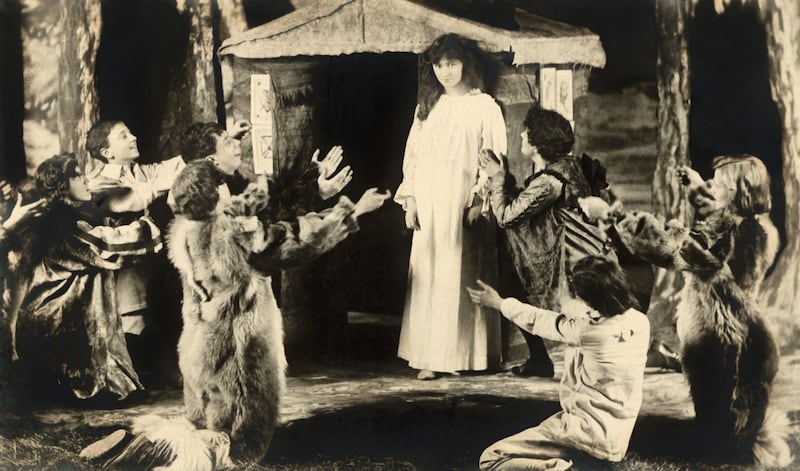
Despite turning the play into a novel called Peter and Wendy, in 1911, Barrie continued to adapt and experiment with the stage version until 1928. Doyle has remained faithful to what he sees as the play’s true ending, which was performed just once during Barrie’s lifetime. Doyle’s script transports the setting from Edwardian London to early 20th-century Dublin: picture Peter telling the Darlings that any sap can fly – “I just need to blow some of the oul’ fairy dust on yis, that’s all.”
He experimented too, with gender. “It’s always Mr Darling plays Captain Hook. And I always wondered why. It’s too easy that the pirate is the dad. I thought it would be psychologically way more interesting to have the mother... In her subconscious somehow, she wants to kill her kids. It’s that famous line that every mother has said to every child ever born: ‘I’ll kill you!’”
For Bennett, the impact of this narrative decision “effectively puts the lens back on to Wendy as well: it’s not about Peter fighting a dad, or his dad. It implicitly becomes about Wendy negotiating her relationship with her mum. It felt like a fresher and more contemporary approach.”
Starring Liam Bixby as Peter and Clare Dunne as Captain Hook and Mrs Darling, and aimed at ages eight up, this could be a cracker of a show – ideal for a Christmas theatre trip with children – if the energy of the fight scene is anything to go by. (For Doyle fans with younger kids, a new musical by Fionn Foley for ages four and over, based on Doyle’s novel The Giggler Treatment, opens at the Ark, in Temple Bar in Dublin, on December 1st.)
Crucial to Peter Pan’s enduring quality is the story’s ability to temper the full-on games-in-the-playground action with quieter, more meditative moments. “It goes in and out of being chaotic and anarchic and lively,” Bennett says. “And also it’s about storytelling, and how kids rationalise what they’re going through by telling their own story as if it’s someone else’s story.” And, like all good children’s stories, Doyle says, “there’s plenty for the grown-ups in there as well.”

The action of the play takes place “within crawling distance” of the theatre, Doyle explains, so shortly after they first met in person, he brought Bennett on a walking tour of his Peter Pan’s Dublin. Their afternoon-long ramble began on Henrietta Street, “to give him the sense of what Dublin was like before the Act of Union, and also to show him a house that had 95 people living in it”. He pictured the Lost Boys coming out of Seán O’Casey’s former home on North Circular Road. They also took in Eccles Street, “because I thought if Leo Bloom and Molly could afford to live in a house on Eccles Street, so could the Darlings”.
The team ended up incorporating architectural references, including a miniature doll’s house, into the set design. I mention that I only recently learned that the term “Wendy house” was a reference to Peter Pan. It’s more than that, Doyle says: the name never existed before Barrie wrote the character of Wendy; it originates with the daughter of a friend of Barrie’s calling him her “fwendy”. “That child died when she was six,” Doyle adds. “His life was full of sadness.”
Like the crocodile, the clock is ticking down towards opening night. As Bennett’s vision for the production has so many fast-moving parts, it’s a bit of a beast to put together, “particularly when we get to the technical rehearsals; joining up the music and the scenes, and then respacing it on the actual stage.”
“It’s a huge challenge knitted all together, I know,” Doyle says. “I don’t feel any sense of anxiety at all, because it’s in really great hands.” He adds: “The big, big lesson of however many plays or screenplays I’ve been involved with is: enter into the spirit of the thing or you’re going to have a miserable time.” Bennett nods in agreement. “Also, you’re doing a play where a grown-up man has to pretend to be a dog, who’s a nanny. So we all have to go with the flow!”
Peter Pan opens at the Gate Theatre, Dublin, on Saturday, November 11th, with previews from Saturday, 4th November; it runs until Sunday, January 14th, 2024.
















